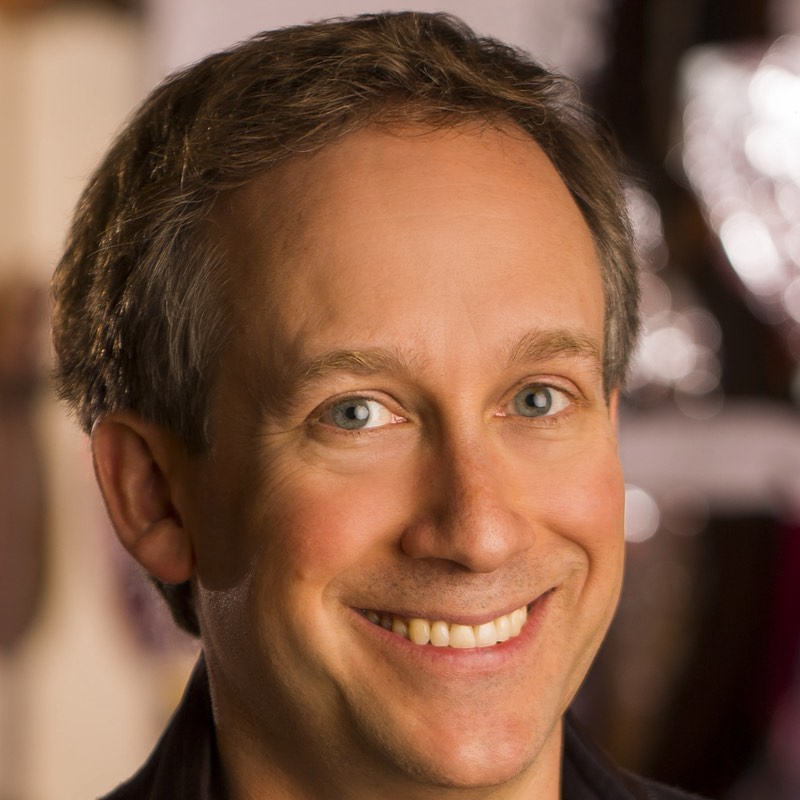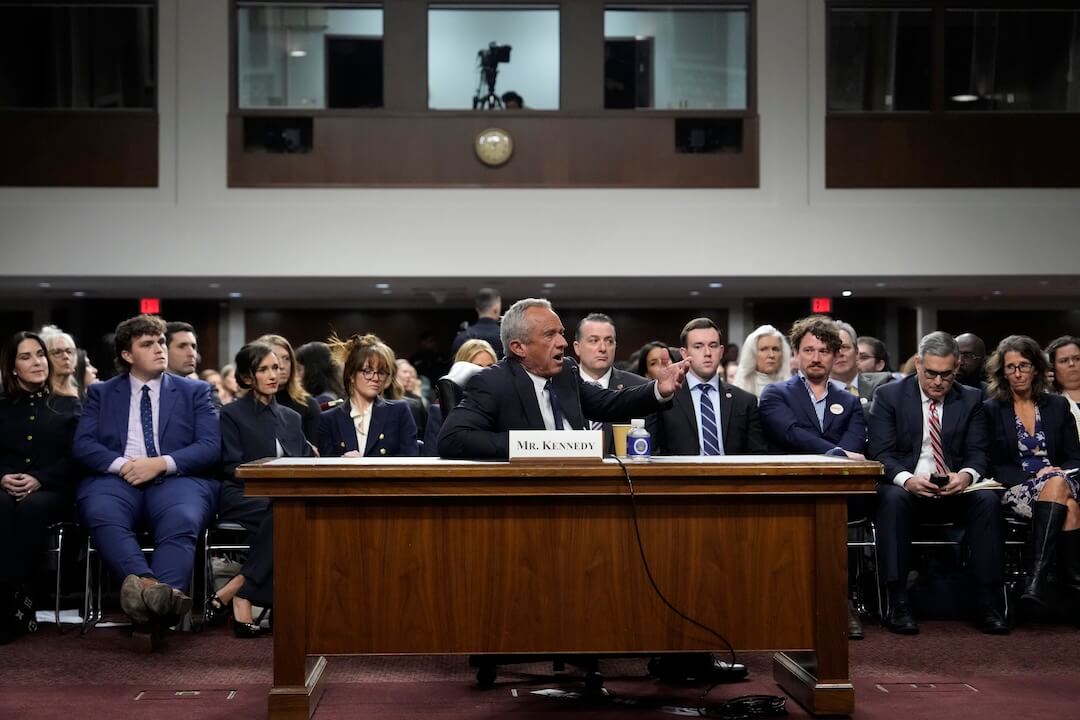This article was originally published by Northwestern University’s Medill Local News Initiative and is republished here with permission.
Blair Kamin ended his 28-year run as the Chicago Tribune’s Pulitzer Prize-winning architecture critic with a Jan. 13, 2021 column that concluded: “Imagine Chicago without a full-time skyline watchdog. Schlock developers and hack architects would welcome the lack of scrutiny.”
That kicker was Kamin’s way of urging the Tribune’s editors and owners to replace him, just as he had succeeded another Pulitzer Prize-winning architecture critic, Paul Gapp. The job was a vital one in a city where architects and developers play an outsized role in shaping daily urban life as well as one of the world’s great skylines.
The Tribune, which had been reducing staff and budgets for years before Alden Global Capital accelerated the process with its May 2021 purchase of Tribune Publishing, did not replace Kamin, just as it did not replace several other culture writers who left the paper. So the retired critic took matters into his own hands.
On Aug. 11, the first column by architecture writer Edward Keegan appeared in the Tribune’s Sunday Opinion section along with the Editor’s Note:
This new Sunday architecture column is generously supported by a grant from former Chicago Tribune architecture critic Blair Kamin that is administered by Journalism Funding Partners, a nonprofit group that partners with newsrooms and funders. The Tribune maintains editorial control over assignments and content. Keegan’s work will appear biweekly in the Opinion section.
Yes, Kamin is paying for the Tribune’s next architecture writer out of his own pocket. Why would he do such a thing?
“I’m a realist, and I realize that, given who the Tribune is owned by now and given the realities of the business model of journalism having collapsed, either somebody was going to do something, or nothing would get done,” he said.
(Disclosure: This writer covered culture for much of his 20-plus years on staff at the Chicago Tribune, including work in the same section as Kamin.)
Funding core news areas
Kamin’s action may be the most dramatic gesture yet among those who wish to boost cultural coverage at financially strapped local news outlets – even for-profit news organizations like the Alden Global Capital-owned Tribune Publishing. As has been documented by the Medill State of Local News Report, the newspaper industry has lost 73% of its jobs since 2005.

Blair Kamin
Attempting to fill this vacuum, foundations are providing much-needed funding for reporting and editing jobs, but most of that money appears to have been directed toward what commonly are seen as core news areas: local government, underrepresented communities and inequities, health and the environment, as well as investigative and watchdog reporting.
Both nonprofit and for-profit news organizations have been funding positions through foundation and community support. Georges Media — owner of the Times-Picayune, Nola.com and other Louisiana outlets — has 22 positions underwritten by grants, its publisher said. The Seattle Times touts that six of its nine investigative reporters are community-supported through its Investigative Journalism Fund. The Dallas Morning News announced in January an effort to raise $2 million from the North Texas community over two years to support 10 journalism positions, including seven reporters.
The first call for grants under the $500 million Press Forward initiative focused on “the long-standing inequities in journalistic coverage of underserved communities.” Press Forward announced last Wednesday $20 million worth of grants to 205 small local newsrooms, at least one in each state. Almost 60% of those awards went to for-profit organizations, as philanthropies increasingly support commercial entities in addition to nonprofits.
“The truth is pretty much in every community in the U.S. right now, the largest entity is the local TV station and newspaper, and those are usually for-profits,” said Jim Brady, the Knight Foundation’s vice president of journalism. “I think it’s smart to put those stories where the eyeballs are, and that’s in for-profit entities.”
But for many philanthropies as well as the news organizations themselves, the cultural beats have been a lower priority.
“There aren’t that many foundations and organizations out there that are focused on supporting cultural criticism and cultural writing,” said Mary Louise Schumacher, a former Milwaukee Journal Sentinel art and architecture critic whose documentary about the plight of art critics, “Out of the Picture,” has been playing the festival circuit this year. (She became part of the story when the Journal Sentinel laid her off in 2019.)
Getting the publications on board can be challenging too. “Editors today at a lot of newspapers, a lot of legacy media, they’re really behind the curve in terms of thinking about what culture critics do,” Schumacher said. “For Chicago to not have an architecture critic is so criminal.”
Lee Bey, an accomplished photographer as well as writer, provides architecture criticism for the Chicago Sun-Times and the local ABC TV news affiliate, but he is also a Sun-Times editorial board member, so his duties are divided.
When Kamin set out to solicit funding for the Tribune’s architecture position, he realized he was in for an uphill battle. “About a month after I left the Tribune, I went to certain foundations, and they were reluctant, for a variety of reasons, to support the proposal that I had, and that was very frustrating,” he said.
So he moved on to other projects, including compiling and promoting a 2022 book featuring his Tribune columns, “Who Is the City For? Architecture, Equity, and the Public Realm in Chicago.” He made another run at foundations last fall, this time with a back-up plan.
“I decided that if initially they weren’t going to make a grant, that I would make a grant myself to do this,” Kamin said. “But it’s complicated, because when you have a so-called donor-advised fund, you can’t give money legally to a for-profit enterprise. So you need to find a nonprofit to give the money to, and they, in turn, will give the money to the for-profit. So it took forever going through a variety of possibilities.”
Kamin consulted with Schumacher, who had been researching methods to support arts journalism. She suggested Kamin contact Journalism Funding Partners, a nonprofit organization dedicated to “building and stewarding connections between funders and news organizations.” Journalism Funding Partners became the conduit between Kamin’s money and the Tribune.
Kamin also had to get the Tribune on board. In the city boasting the world-class Chicago Symphony Orchestra and Lyric Opera of Chicago, the newspaper already had its classical music coverage, by freelancer Hannah Edgar, underwritten by the San Francisco-based Rubin Institute for Music Criticism. Kamin didn’t attempt a similar arrangement with the Tribune’s arts/features side for an architecture critic. Instead, he approached Chris Jones, the Tribune’s editorial page editor as well as its chief theater critic.
“I had a great relationship with Chris because we worked together on critics row,” Kamin said. “I know that he has a real civic consciousness. He cares about the city. I didn’t need to explain to him that architecture was really important, and Chris was receptive from the get-go.”
Over lunch with Kamin, Jones listened to Kamin’s pitch and mentioned the Rubin Institute’s support of the Tribune’s classical music writer. “I said, ‘What would be the architecture equivalent of that?’” Jones recalled asking. “Blair said, ‘Me.’ I almost dropped my fork. I was very surprised by it. I said, ‘Are you sure?’ He said, ‘Yes, this is what I want to do.’ I said, ‘This is a fabulous thing if that’s how you want to handle it, and it’s a win-win for everybody.”
Kamin agreed with that assessment. “Chris was offering prime real estate, and I was offering him copy that would be there for him,” he said.
The Tribune retains editorial control, but Jones was receptive to Kamin’s suggestion of Keegan, a Chicago architect/writer as well as contributing editor to Architect magazine. The arrangement has borne fruit, with much attention paid to Keegan’s Sept. 8 column criticizing the Chicago Bears’ proposed public lakefront stadium to replace Soldier Field.
“I will give them this: The Chicago Bears are thinking big,” Keegan wrote. “But they’re playing with the house’s money. And we are the house.”
“There’s a great interest in architecture coverage in Chicago,” Jones said, “and as evidence of that, Ed’s story on the Bears stadium was one of the most-read opinion pieces of the year. I think it was a hole in the paper.”
Still, Jones cautioned, Keegan will not cover the beat the way Kamin and Gapp did. “He’s not our staff architecture critic,” the editorial page editor said. “It’s not replacing Blair Kamin in any shape or form. He’s writing on architectural subjects, and it’s a way to get in the paper some analysis of the architectural world. But it’s not the same as having a beat reporter.”
Paying for a biweekly column, in other words, is not the same as underwriting a full-time reporting position, so if news breaks on the architecture beat, “that work would have to be done by the reporters on the news side,” Jones said. “This is not a replacement for that, and I wouldn’t want it to be.”
Boosting cultural coverage
Nancy Lane, CEO of the Local Media Association, said she is happy to see support of culture and arts coverage finally getting a boost. She noted that the city of Sacramento, California, is funding an arts reporter as part of its Solving Sacramento initiative.
“We are starting to see these non-hard news beats get some attention and get some funding, and it’s a welcome addition,” Lane said.
Rick Edmonds, media business analyst for the Poynter Institute, noted that as tough times hit the local news industry, “those kinds of [cultural] beats have gone on the chopping block when there need to be budget cuts.” Yet cultural coverage “definitely has value, which is why it was there in the first place. It’s part of the core of the city, some places more than others.”
He added: “I think it’s a valuable thing and great if you can find somebody who will support it. It’s eye-catching and rare for it to be coming from a reporter.”
Brady at the Knight Foundation said foundations often have funded the arts themselves but now are seeing a need to increase support of arts journalism, much of which “has been gutted.”
“I think that’s where a focus needs to be for philanthropy,” Brady said. “How do we get communities able to have discussions about the arts and the high school sports team and all those things that used to be water-cooler topics?”
Brady, though, cautioned that philanthropic support of news positions needs to be “additive” rather than merely moving a salary burden from the organization to an outside party. “If you think the news organization will get rid of two other positions if you fund two positions, don’t do it,” Brady said. “You have to be careful about that.”
Does Kamin worry that by paying for the architecture writer himself, he is letting Alden Global Capital off the hook, making it easier for the Tribune’s owners to be cheapskates?
“I’m not making it easier for them to be cheapskates, because they are going to be cheapskates no matter what,” Kamin said. “I mean, that’s in their DNA.”
Kamin stressed that Alden is receiving no money from him, and the agreement via Journalism Funding Partners calls for Keegan’s columns to be free to everyone, not behind the Tribune’s paywall.
“I guess you could say that a few more people will visit the website and jack up some of their other numbers, but the important thing is that the coverage is there,” Kamin said. “And I know from getting hundreds of responses to the announcement that architecture criticism was returning, their readers were thrilled about this. So if Alden provides a platform for that coverage, I’m getting something from them. They’re not getting anything from me.”
He acknowledged: “Ideally, the paper should have done this itself. But we don’t live in that world. I didn’t want to be the last architecture critic at the Tribune, and it had already been more than three years, and people would come up to me on the street, and they would say, ‘We miss you.’ I didn’t want this absence to go on for six or seven years, and then people would forget.”
Plus, major architecture stories were on the horizon, and Kamin wanted to keep the primary coverage local. “The Obama Presidential Center is going to open in 2026, and we’re not going to let the New York Times cover that and beat the Chicago Tribune. No way,” Kamin said. “So it was really important to me to get this going again.”
Schumacher, among others, appreciates the effort.
“I can’t believe Blair had to do what he did to make that happen, but I’m glad he did,” she said. “It’s so badass that he’s doing this.”








With all due respect and admiration for what Blair Kamin is trying to do (I had the privilege of working alongside him many years ago at the Chicago Tribune), I must say that it appears the newspaper industry has now reached peak absurdity: Journalists themselves reaching deep into their own lint-filled pockets to help pitiless venture capitalists strip-mine legacy newspapers by subsidizing the cost of reporters that they themselves refuse to pay for.
Yikes.